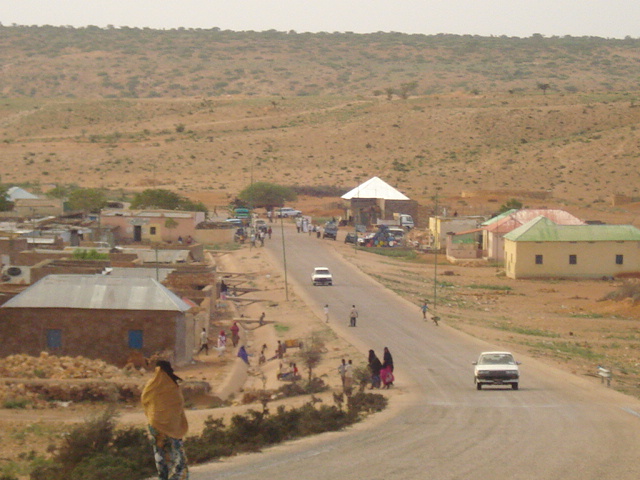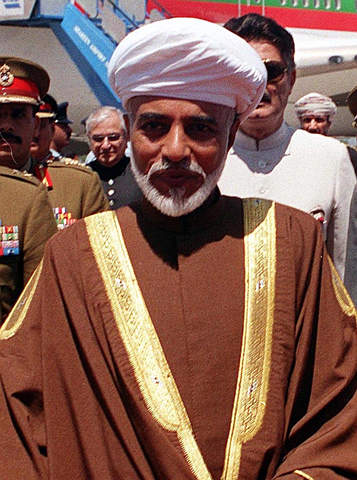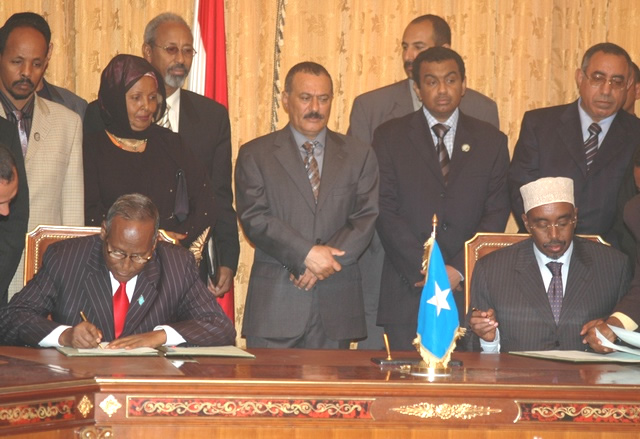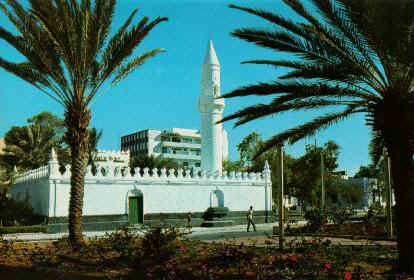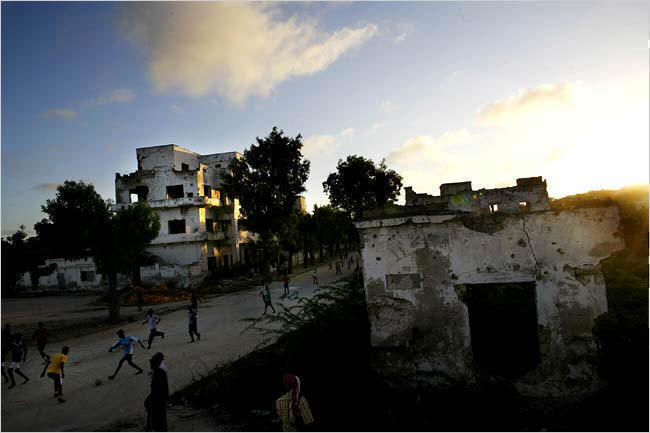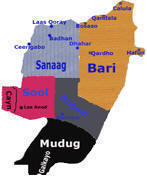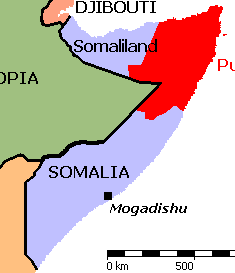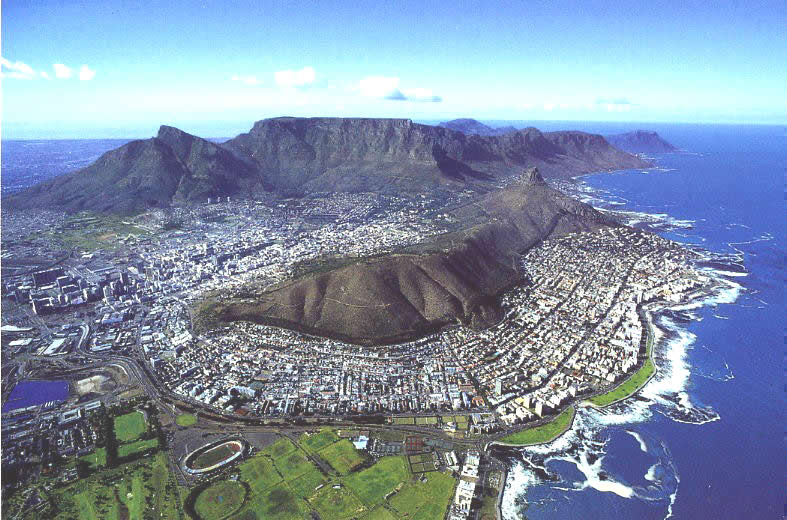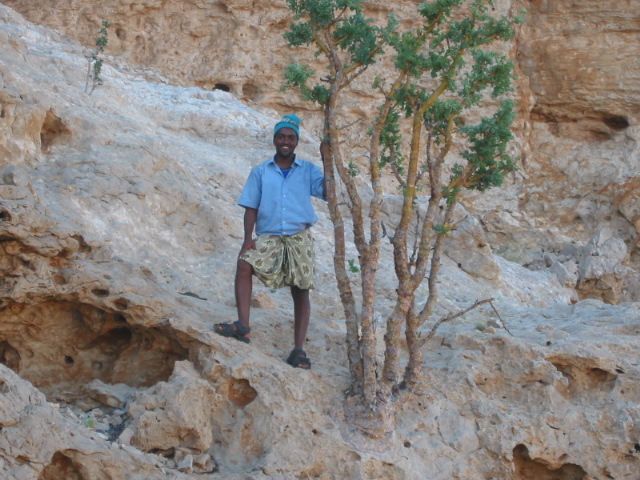
The Secret War: How
By Sean D. Naylor � Staff writer
Air Force Times
Sunday, October 30, 2011
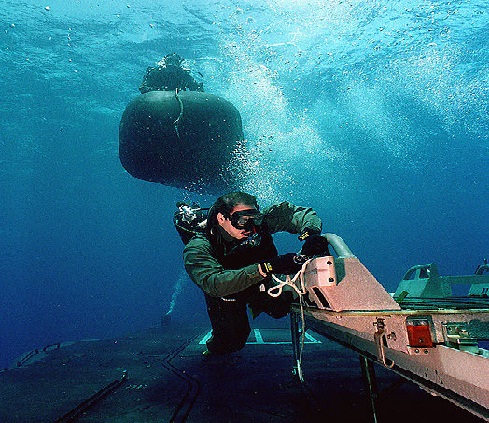
Members of SEAL (
Clandestine SEAL mission planted cameras, but little came out of the images
One night in November 2003, beneath the moon-washed waters off Somalia`s northern coast, a small, dark shadow slipped away from the attack submarine Dallas and headed toward the shore.
The smaller shape was a 21-foot-long submersible called a SEAL delivery vehicle.
Launched from a tubular dry deck shelter on the sub and designed to infiltrate Navy SEALs on covert or clandestine missions, the SDV carries its crew and passengers exposed to the water, breathing from their scuba gear or the vehicle`s compressed air supply. Aboard were a handful of SEALs on a top-secret special reconnaissance mission into a country with which the
The SEALs grounded the SDV on the ocean bottom and pushed away from it, taking with them the centerpiece of their mission, a specially disguised high-tech camera called a Cardinal device.
Unbeknownst to them, during the previous 24 hours, their mission had been the subject of Cabinet-level debate in
Now they were conducting what a special operations source with firsthand knowledge of the operation referred to as �a long swim through some of the most shark-infested waters in the world� toward the coastline that loomed ominously ahead of them. The hard part was just beginning.
The classified mission was an early volley in a decade-long effort to hunt down al-Qaida operatives in the Horn of Africa. Waged largely out of sight by
If there was a moment that launched the campaign, it came in January 2002 in a frigid electrical closet at Afghanistan`s Bagram Air Base. FBI Special Agent Russ Fincher and New York Police Detective Marty Mahon were interrogating Ali Abdul Aziz al-Fakhri, a Libyan known by his nom de guerre, Ibn al-Shaykh al-Libi.
One of the most important prisoners taken up to that point in the war, al-Libi had run al-Qaida`s Khalden training camp, which counted �shoe bomber� Richard Reid and Zacarias Moussaoui, the convicted 20th hijacker of the Sept. 11 plot, among its hundreds of graduates.
Using classic interrogation techniques, Fincher and
The first phase was to flee to Pakistan`s tribal areas that abut Afghanistan �but be prepared because of the way things were going to go further.� The bottom line of al-Qaida`s plan, the military source said, was: We need to reconstitute and the next sanctuaries in which to do that are Yemen and Somalia.
The mission
The SEALs conducting the clandestine camera missions were part of a secret task force established just for that operation. Its commander, Special Forces Col. Rod Turner, also headed two other elements that shared forces and had overlapping chains of command.
One was Joint Special Operations Task Force-Horn of Africa, which fell under Combined Joint Task Force-Horn of Africa in
With the exception of its small staff, the JSOTF doubled as U.S. Central Command`s crisis response element, or CRE, a force led by Turner and available to the CJTF-HOA commander for direct action, special reconnaissance and personnel recovery missions, but which also could be tasked for other missions by CENTCOM commander Army Gen. John Abizaid.
The CRE was a robust force package. It included:
► A Special Forces commander`s in-extremis force, or CIF, company. A CIF is highly trained in direct action and available to conduct no-notice high-risk missions for the geographic combatant commander its parent SF group supports.
► A SEAL platoon, which usually includes two officers and 14 enlisted.
► A Naval Special Warfare rigid-hull inflatable boat, or RHIB, detachment.
► An Air Force special operations package that included four MH-53 Pave Low helicopters and two MC-130P Combat Shadow fixed-wing turboprop aircraft, designed to conduct low-visibility or clandestine air-to-air refueling and infiltration missions, as well as about 200 personnel.
The entire CRE, plus another contingent of SEALs equipped with the SEAL delivery vehicles, also belonged to a third task force commanded by Turner that he stood up for a single highly classified operation that came down from Defense Secretary Donald Rumsfeld
It was that operation that found the SEALs swimming toward the Somali shore on the first of about a dozen missions to install the Cardinal devices along the Somali coastline.
The cameras were disguised to look like natural or other man-made objects, so as not to arouse suspicion. The aim was to place them facing locations such as potential al-Qaida training camps or piers where al-Qaida personnel were suspected of arriving.
The devices were set to photograph the locations and then transmit the images automatically via satellite back to what a senior intelligence official described as �a limited pool of customers� in the
With its combination of derring-do and high-tech gadgetry straight out of a James Bond movie, the mission was by no means universally popular among the few
The plan was to emplace 17 cameras along the Somali coastline, according to the special ops source. But the embassy �didn`t see the wisdom in any of them,� said an intelligence source with long experience in the Horn. In Bellamy`s view, the hidden camera operation �was overkill,� the intelligence source said.
The question being asked in the embassy was, �Why are we creating this Ferrari when all you had to do was pay a guy to go in� and set up the cameras, the intelligence source said. To
Matters came to a head 24 hours before the first Cobalt Blue mission was due to launch. Bellamy called the CJTF-HOA commander, Marine Brig. Gen. Mastin Robeson, and asked him to stop the mission because it would put agency assets in danger, said the special ops source with firsthand knowledge of the operation. Robeson, one of only four people in the CJTF-HOA headquarters who knew about the missions, refused because the operation was being conducted at the direction of the defense secretary, the source said. But Bellamy repeated his request in a cable to Robeson, he said.
Within hours, the argument had reached Rumsfeld and Director of Central Intelligence George Tenet. The two senior officials argued their respective cases to the president, who, according to the special ops source with firsthand knowledge of the operation, quickly came to a decision: Execute the Cobalt Blue targets as planned and renegotiate the others with the embassy. As a result, of the 17 cameras, �we ended up putting 12 to 14 in,� the special ops source said.
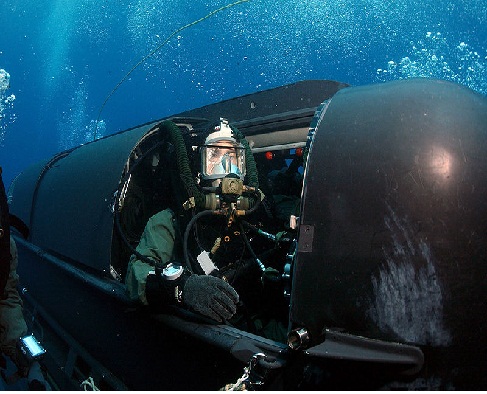
A member of SEAL Delivery Vehicle Team Two (SDVT-2)
Dangerous waters
The SEALs preparing to execute the first Cobalt Blue mission knew nothing about this back and forth, and power politics did not affect the mission timeline. That first target`s identity remains classified, but it was chosen because it was the least challenging of the northern set of missions, said the special ops source. �They were not in a sequence that went from west to east,� he said. �This one was chosen specifically out of order because it was to be a confidence target [to answer the question], `Will this thing work?`�
�The intelligence value on this particular target was rated as low, but so was the threat,� he said. �It`s bad enough when you`re getting in this little sub in some of the worst waters in the world and you`re going into a place we haven`t been in a long, long time, and so we did it so the operators could gain confidence that they could do it, in probably the least hostile environment in which they could be compromised.�
That first mission was deliberately conducted with �a full moon � [or] a fairly full moon,� so �the moon would be � waning as we went to more and more difficult targets,� he said.
For the Cobalt Blue missions, a single Navy flattop was positioned off the coast, courtesy of 5th Fleet. The flattop functioned as the command ship for Cmdr. Mark Mullins, who was in charge of the SEALs conducting the SDV missions, according to the special ops source. (Those SEALs were drawn from a SEAL team on the East Coast of the
Air Force special operations AC-130 Spectre gunships based in
�Fifth Fleet was very helpful in providing assets at different periods for different lengths of time that they put under [our] command and control to be able to conduct classified operations,� said a senior CJTF-HOA official from the period, who declined to talk about the SEAL missions in detail.
The flattops stayed 60 to 70 miles out at sea during the day, but the one that functioned as Mullins` command ship and which also carried the RHIB element would come closer on nights the SEALs were going ashore, he said.
The AC-130s and Super Cobras were not the only backup available to the SEAL elements. There were also two separate quick-reaction forces available for each mission. One was another SEAL element in RHIBs floating near Mullins` command ship that could race in if the SDV team got into trouble near the shoreline. The other consisted of a couple of 12-man Special Forces operational detachments-alpha, or A-teams, drawn from A Company, 1st Battalion, 5th Special Forces Group.
Between the gunships, the SEALs bobbing up and down in their RHIBs and the SF soldiers waiting with Navy HH-60 helicopters, �no matter what, we`d always be able to get the four guys out of there,� said the special ops source.
Once the SEALs had swum ashore, their first task was to find the right spot to emplace the camera. Although the general locations had been selected ahead of time, the SEALs �had to make the final site selection themselves,� said the special ops source. This required a combination of tactical skill and raw courage, given that they were often operating in urban and semiurban terrain.
�They did some ballsy stuff � these things were not stuck out in the middle of nowhere,� the special ops source said. The SEALs �were operating in some of the most heavily congested areas� in
For about 24 hours prior to the mission, overhead coverage of the target location came courtesy of Navy P-3 Orion reconnaissance planes flying from the
�We gave ourselves an additional 24-hour window for each target if for some reason a threat appeared or bad weather moved in,� said the special ops source.
Stealthy shooting
The SEALs used photos taken by the P-3 to help decide where to put the cameras.
�We changed targets at the last minute a couple of times based on intel from the Orion,� said the special ops source.
But the SEALs also had the flexibility to change their decisions once they had come ashore. The cameras` ingenious design gave them numerous options.
�It could be disguised in any way,� the special ops source said. �It could be disguised as a man-cut block to put in a sea wall, it could be disguised as a piece of a pier, as part of an old rusty ship, as a � pineapple plant.�
On at least one occasion, the best place for the camera turned out to be on a rusted, wrecked ship in a harbor, the special ops source said. On another occasion, the SEALs put the camera on a breaker made of rocks near a pier, he added.
The farthest the SEALs had to travel upon hitting the beach was �less than a mile,� but they had to move stealthily while carrying �pretty heavy equipment,� the special ops source said.
After emplacing the Cardinal device, the SEALs had to test its ability to take and transmit a photo before they returned to the
On most of the missions, which stretched over a six-week period in November and December 2003, the SEALs spent about 2� to three hours ashore, but one mission required them to spend five to six hours out of the water, said the special ops source.
It was critical that the SEALs were not seen at any point during the mission.
�Success is not getting the camera taking pictures,� said the special ops source. �Success is getting in and out of there without being detected ... If you get the camera set up, but you get detected, you`ve blown it.�
With targets located in or near major ports like Kismayo and Merka in southeastern
�They were never seen,� the special ops source said. There were not even any close calls, he added, crediting that to �detailed planning by Mark Mullins and his crew � [and] the professionalism of the SEALs. They executed it according to the plan and everything went like clockwork.�
Interesting catch
On Jan. 12, 2004, fishermen from the village of Ras Kamboni made an odd discovery on the rocky, depopulated island of Buur Gaabo, just off the southeastern Somali coast: one or more cameras �and other electronic devices,� according to the website Somalilandtimes.net. They could only guess at the equipment`s origin and purpose, but it seems clear they had stumbled upon a Cardinal device, underlining Bellamy`s reservations about the SEAL missions.
�What the ambassador was a little bit upset about was the devices were compromised,� said the intelligence source with long experience in the Horn.
There were other drawbacks to the Cardinal device. It had been developed to watch Scud missile launchers during the invasion of
To save battery power, the cameras were set to take photographs every 12 hours, too long a gap to be of value in the hunt for individuals. Consequently, the pictures relayed were �less really good intelligence and more really good atmospherics,� said the senior intelligence official. (The devices` batteries likely expired several years ago, sources said.)
The intelligence source with long experience in the Horn spoke derisively of a cannery that became a Cobalt Blue target known as �the tuna factory.�
�They were trying to validate that this tuna factory was an al-Qaida support [facility] of some kind,� the source said.
The
`Unblinking eye`
Asked what the secret camera missions achieved, the intel source with long experience on the Horn answered bluntly: �Nothing.� The senior intelligence official was only slightly more diplomatic. �If it were a business, it`s not making any money,� the official said.
What the extraordinary nature of the SEAL missions underlined, the senior intelligence official said, was the paucity of technical intelligence collection assets � especially Predator drones � available to the military and CIA officials charged with tracking down al-Qaida operatives in
�If we`re having to go to that extreme, it`s because we lack other capabilities because they`re drawn elsewhere,� the senior intel official said. �Instead of doing it like that, you`d want to have more Predators.�
The official referred to Joint Special Operations Command`s notion of �the unblinking eye� � using intelligence, surveillance and reconnaissance assets to keep a target under constant watch. In
But the wars in those countries deprived commanders in the Horn of the overhead assets they needed, �so in Somalia, it was a blink all the time,� the official said, adding that commanders �would go days without any kind of overhead collection capability� they controlled.
The intel operatives and special operators retained access to �national� intelligence products such as satellite photos and the National Security Agency`s signals intercepts, but that wasn`t enough, the senior intelligence official said. �There was always national, but national just doesn`t do it,� the official said.
It was that desperation for more granular intelligence that drove the Cardinal device operation and other missions.
�We were just kind of out there almost, if you will, shooting at clouds, hoping a duck would fall down,� said a military targeting official said. �So there was a bunch of stuff put out there � but not a lot of fidelity came back out of it.�
|
|
 Sawirro Somaliya  |

|
GOVERNANCE
The Scourge and Hope of Somalia A New Book By Ismail Ali Ismail 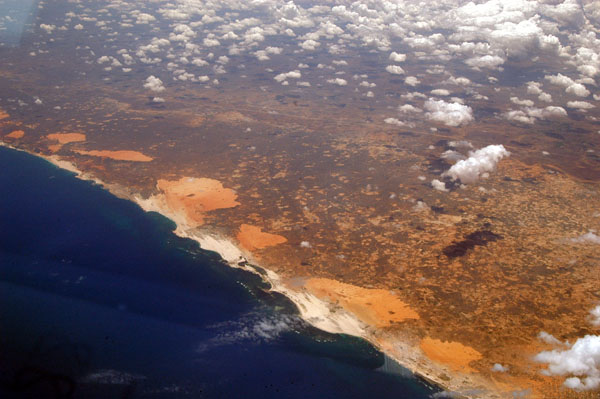 Which Way to the Sea, Please? By Nuraddin Farah Dhulkii Burcad-Badeedda .jpg) Budhcad Badeed Weli Qiil ma Leeyahay? 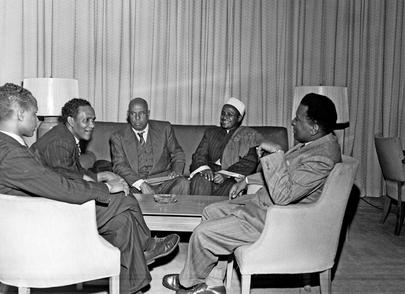 SYL LETTERS By A S Faamo |
 |
 |
© Copyright BiyoKulule Online All rights reserved�
Contact us [email protected] or [email protected] |


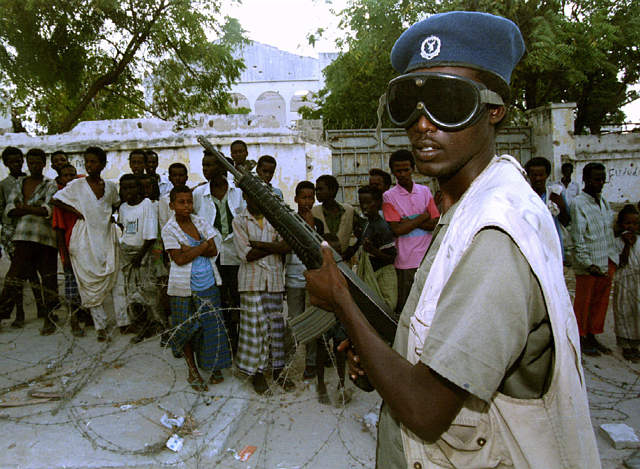




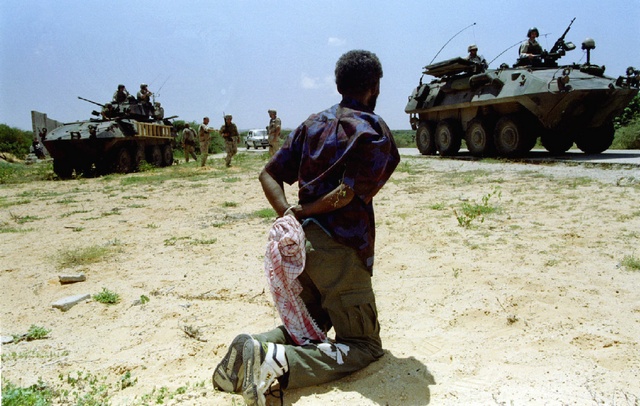
.jpg)




